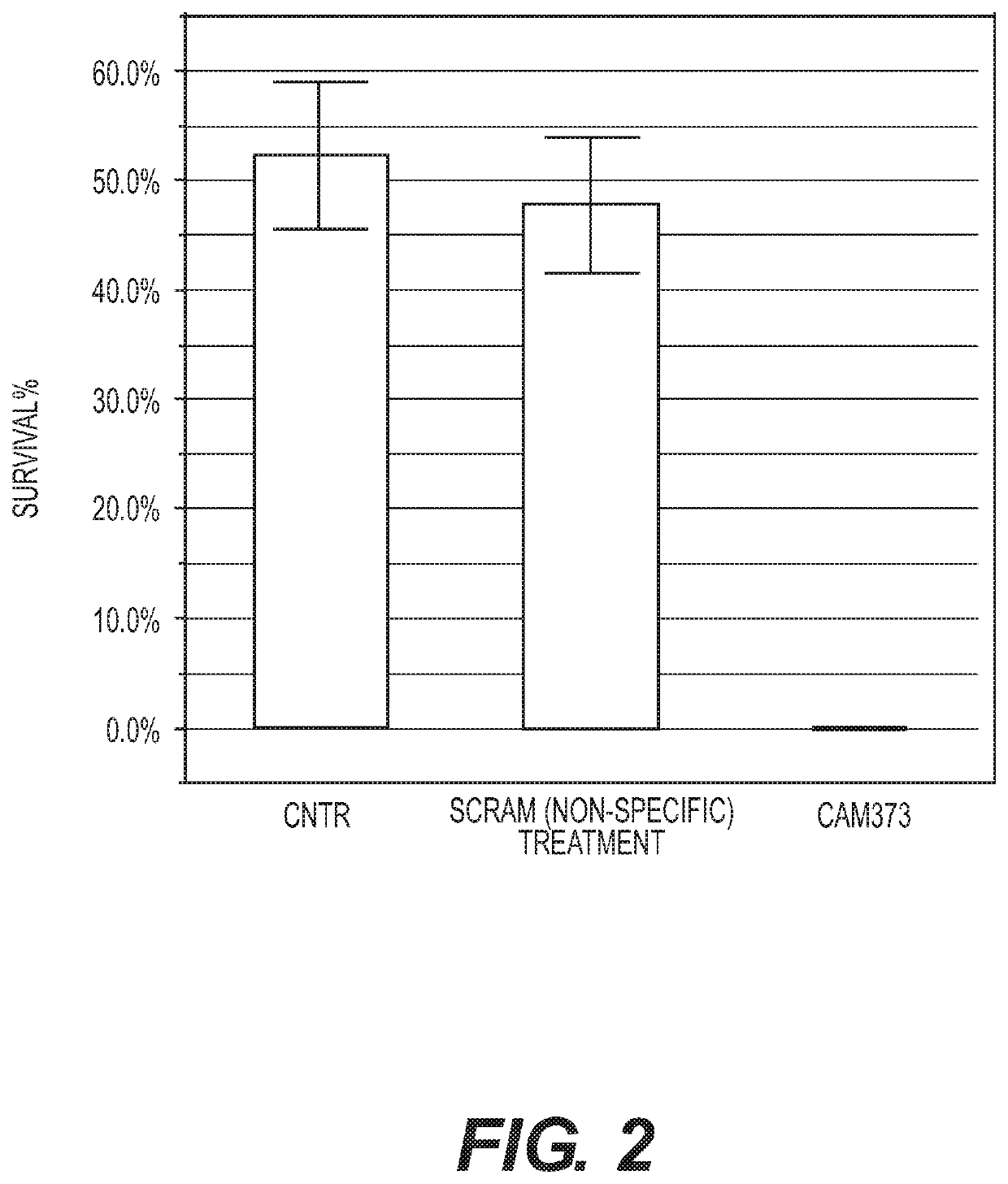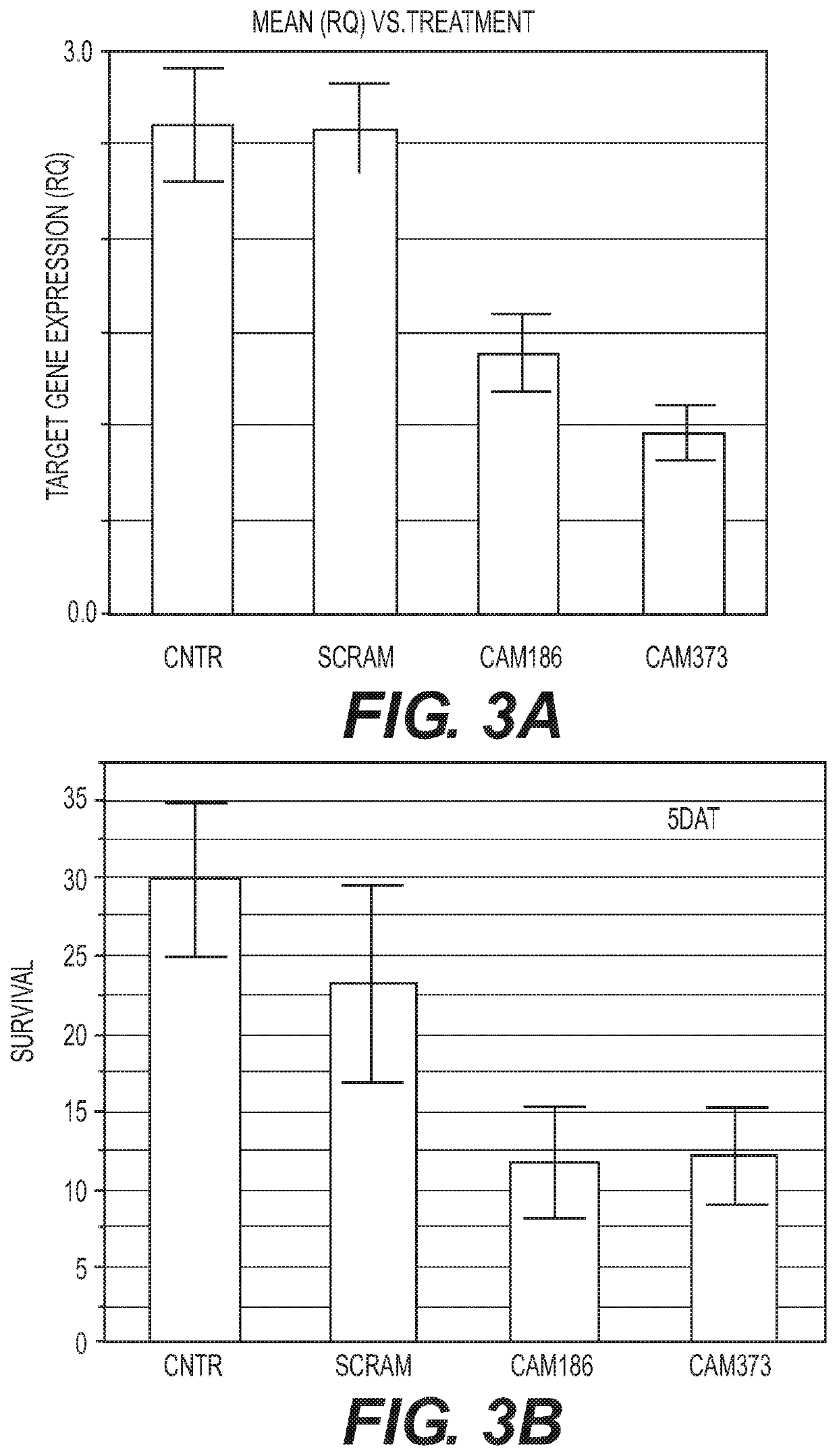Compositions and methods for controlling arthropod parasite and pest infestations
a technology for controlling arthropod parasites and pests, applied in the field of compositions and methods for controlling arthropod parasites and pest infestations, can solve the problems of affecting the immune system of innate honey bees, affecting the health of honeybees, and dramatically increasing viral load, so as to reduce the parasite load of honeybee hives, and reduce the parasite load of bees
- Summary
- Abstract
- Description
- Claims
- Application Information
AI Technical Summary
Benefits of technology
Problems solved by technology
Method used
Image
Examples
example 8
n (CAM) Gene Homologs from Arthropod Pest and Parasite Species and Corresponding dsRNA Polynucleotides
[0186]Using standard bioinformatics technique and the sequences SEQ ID NOs: 1 and 2 for Varroa destructor a set of 31 conserved Calmodulin (CAM) gene sequences were identified in arthropod pest species that infest either other arthropods or mammals and that will be targeted for gene regulation. These sequences were identified and presented as a phylogenetic tree in FIG. 1. The DNA sequences in FIG. 1 were further analyzed by identifying the conserved 373 bp domain within each sequence that corresponds to SEQ ID NO: 3 (CAM_L / CAM373). Table 4 lists the SEQ ID NOs of the newly identified Calmodulin (CAM) gene sequences as well as the corresponding 373 bp dsRNA polynucleotide trigger sequences. The 373 bp polynucleotide dsRNA sequences will be tested either alone or in combination in direct feeding assays against their respective arthropod species.
[0187]
TABLE 4Calmodulin (CAM) gene sequ...
PUM
| Property | Measurement | Unit |
|---|---|---|
| time | aaaaa | aaaaa |
| time | aaaaa | aaaaa |
| time | aaaaa | aaaaa |
Abstract
Description
Claims
Application Information
 Login to View More
Login to View More - R&D
- Intellectual Property
- Life Sciences
- Materials
- Tech Scout
- Unparalleled Data Quality
- Higher Quality Content
- 60% Fewer Hallucinations
Browse by: Latest US Patents, China's latest patents, Technical Efficacy Thesaurus, Application Domain, Technology Topic, Popular Technical Reports.
© 2025 PatSnap. All rights reserved.Legal|Privacy policy|Modern Slavery Act Transparency Statement|Sitemap|About US| Contact US: help@patsnap.com



